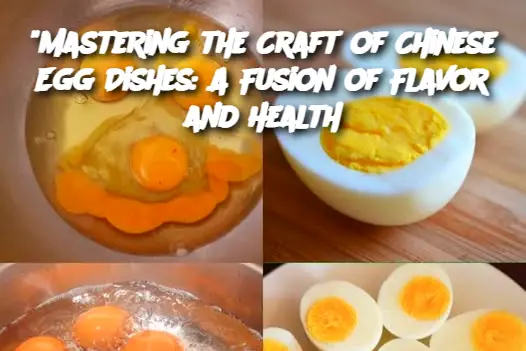Heat chicken stock in a pot until it’s gently simmering. In a bowl, whisk the eggs lightly. Slowly pour the beaten eggs into the simmering stock in a thin stream, stirring gently to create silky egg ribbons.
Add a dash of soy sauce, sesame oil, and a sprinkle of white pepper for seasoning. Top with sliced spring onions for a refreshing touch.
Tips for Serving and Storing:
Serving Suggestions: Chinese egg dishes are perfect for serving with steamed rice or as part of a larger meal alongside stir-fried vegetables, noodles, or meats. They can be enjoyed as breakfast, lunch, or dinner. Garnish with fresh herbs like cilantro or spring onions for added color and flavor.
Storage: Leftover egg dishes can be stored in the refrigerator for up to 2 days. Reheat steamed eggs gently in a steamer to maintain their smooth texture. Scrambled eggs can be reheated in a non-stick pan over low heat, adding a splash of water to revive their moisture.
Make Ahead: Tea eggs can be made in advance and stored in their tea mixture. They taste even better the next day as the flavors continue to infuse.
Variants:
Shandong-Style Scrambled Eggs: For a variation with a regional twist, add finely chopped vegetables like tomatoes or spring onions to scrambled eggs. In some regions of Shandong, eggs are cooked with a bit of vinegar and sugar for a sweet-sour flavor.
Chili Egg Stir-Fry: For those who enjoy heat, add sliced chili peppers to scrambled or steamed eggs. This variant is popular in Sichuan cuisine, where spicy flavors are a hallmark.
Egg with Pickled Vegetables: Add pickled mustard greens or other pickled vegetables to scrambled eggs for a delightful contrast of tangy and savory flavors.
Century Eggs: Known as “preserved eggs,” these eggs have a distinctive dark color and strong flavor. They are often used in Chinese egg dishes like porridge or served with soy sauce and pickled ginger as an appetizer.
FAQ:
Q1: Can I make Chinese eggs without using soy sauce? A1: Yes, you can. If you’re looking for a soy-free option, substitute with coconut aminos, which offer a similar umami flavor without the soy. You can also season with sea salt and a touch of miso paste.
Q2: What makes Chinese steamed eggs so silky? A2: The secret to smooth, silky steamed eggs lies in the water-to-egg ratio and the gentle steaming process. Using a 1:1 ratio of water to eggs and steaming the mixture at a low, consistent temperature allows the eggs to set into a delicate, custard-like texture.
Q3: How long can I store Chinese tea eggs? A3: Chinese tea eggs can be stored in their brine for up to a week in the refrigerator. The longer they marinate, the richer the flavor becomes.
Q4: Are Chinese eggs good for weight loss? A4: Yes, eggs are a great source of high-quality protein and can help keep you full longer. Chinese egg dishes like steamed eggs or egg drop soup are light yet nourishing, making them a healthy choice for weight loss.
Q5: Can I use other herbs or spices in Chinese egg dishes? A5: Absolutely! Feel free to experiment with herbs like cilantro, basil, or even a little ginger or garlic for extra depth. Spices like star anise or cinnamon can also be added to steamed or tea eggs for additional fragrance and flavor.
By mastering the art of Chinese egg cooking, you can create dishes that are not only delicious but also contribute to overall wellness. Whether you enjoy the comforting texture of scrambled eggs or the delicate smoothness of steamed eggs, these dishes provide a nutritious way to enjoy the versatility of eggs in your culinary repertoire.
ADVERTISEMENT

